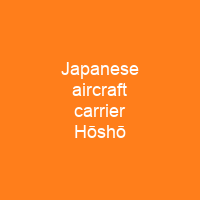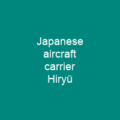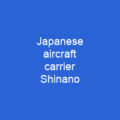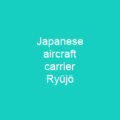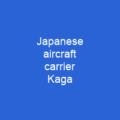Hōshō was the world’s first commissioned ship that was built as an aircraft carrier. Commissioned in 1922, the ship was used for testing carrier aircraft operations equipment, techniques, and carrier aircraft operational methods and tactics. She participated in the Shanghai Incident in 1932 and in the opening stages of the Sino-Japanese War in late 1937. The carrier was placed in reserve after her return to Japan from China and she became a training carrier in 1939. During World War II, the carrier resumed her training role in Japanese home waters for the duration of the conflict and survived the war with only minor damage from air attacks. Hōsho was scrapped in Japan beginning in 1946.
About Japanese aircraft carrier Hōshō in brief
 Hōshō was the world’s first commissioned ship that was built as an aircraft carrier. Commissioned in 1922, the ship was used for testing carrier aircraft operations equipment, techniques, and carrier aircraft operational methods and tactics. The ship’s superstructure and other obstructions to the flight deck were removed in 1924 on the advice of experienced aircrews. She participated in the Shanghai Incident in 1932 and in the opening stages of the Sino-Japanese War in late 1937. The carrier was placed in reserve after her return to Japan from China and she became a training carrier in 1939. During World War II, the carrier resumed her training role in Japanese home waters for the duration of the conflict and survived the war with only minor damage from air attacks. She was used as a repatriation transport after the war, making nine trips to bring some 40,000 Japanese soldiers and civilians to Japan. Hōsho was scrapped in Japan beginning in 1946. A planned sister ship, named Shokaku, was cancelled in 1922 before any construction started. The Japanese government authorized the construction of a seaplane carrier in its “eight-six” fleet program of 1918. The plan was revised after reports from Japanese observers with the Royal Navy in Europe about the desirability to be able to land aircraft on the ship. The new requirements were modeled on HMS Furious after she received her rear flight deck in 1918.
Hōshō was the world’s first commissioned ship that was built as an aircraft carrier. Commissioned in 1922, the ship was used for testing carrier aircraft operations equipment, techniques, and carrier aircraft operational methods and tactics. The ship’s superstructure and other obstructions to the flight deck were removed in 1924 on the advice of experienced aircrews. She participated in the Shanghai Incident in 1932 and in the opening stages of the Sino-Japanese War in late 1937. The carrier was placed in reserve after her return to Japan from China and she became a training carrier in 1939. During World War II, the carrier resumed her training role in Japanese home waters for the duration of the conflict and survived the war with only minor damage from air attacks. She was used as a repatriation transport after the war, making nine trips to bring some 40,000 Japanese soldiers and civilians to Japan. Hōsho was scrapped in Japan beginning in 1946. A planned sister ship, named Shokaku, was cancelled in 1922 before any construction started. The Japanese government authorized the construction of a seaplane carrier in its “eight-six” fleet program of 1918. The plan was revised after reports from Japanese observers with the Royal Navy in Europe about the desirability to be able to land aircraft on the ship. The new requirements were modeled on HMS Furious after she received her rear flight deck in 1918.
The ship was to be capable of 30 knots and fitted with a forward flight deck, superstructure, funnels amidships, and a large hangar aft. Her three funnels were mounted on the starboard side and swiveled to lie horizontal during flight operations. She displaced 7,470 long tons at standard load, and 9,494 long tons at normal load. Her crew totaled 512 officers and men. She was completed with an overall length of 168. 25 meters. She had a beam of 17. 98 meters and a mean draft of 6. 17 meters. The ship had eight Kampon Type B water-tube boilers with a working pressure of 18. 3 kgcm2 and a temperature of 138 °C and provided steam to the turbines, although only four were fired. The other four used a mix of oil and coal, but the ship’s designed speed was 66 knots, but she made 26,117 from 31,117 on her sea trials on 30 November 1922. She carried 2,700 long tons of fuel, an extraordinary total for such a small ship, to give a range of 8,680 nautical miles at 12 knots. To reduce rolling stability, a gyrostabilizer produced by the American Sperry Gyroscope Company was installed by the Japanese technicians in 1922. The gyroscope was initially unreliable as the technicians were badly trained by the Sperries Company, but eventually proved its worth as the ship proved to be worth its weight in combat. Hohshō’s designedSpeed was reduced to 25 knots, based on British experiences during World War I.
You want to know more about Japanese aircraft carrier Hōshō?
This page is based on the article Japanese aircraft carrier Hōshō published in Wikipedia (as of Oct. 31, 2020) and was automatically summarized using artificial intelligence.
